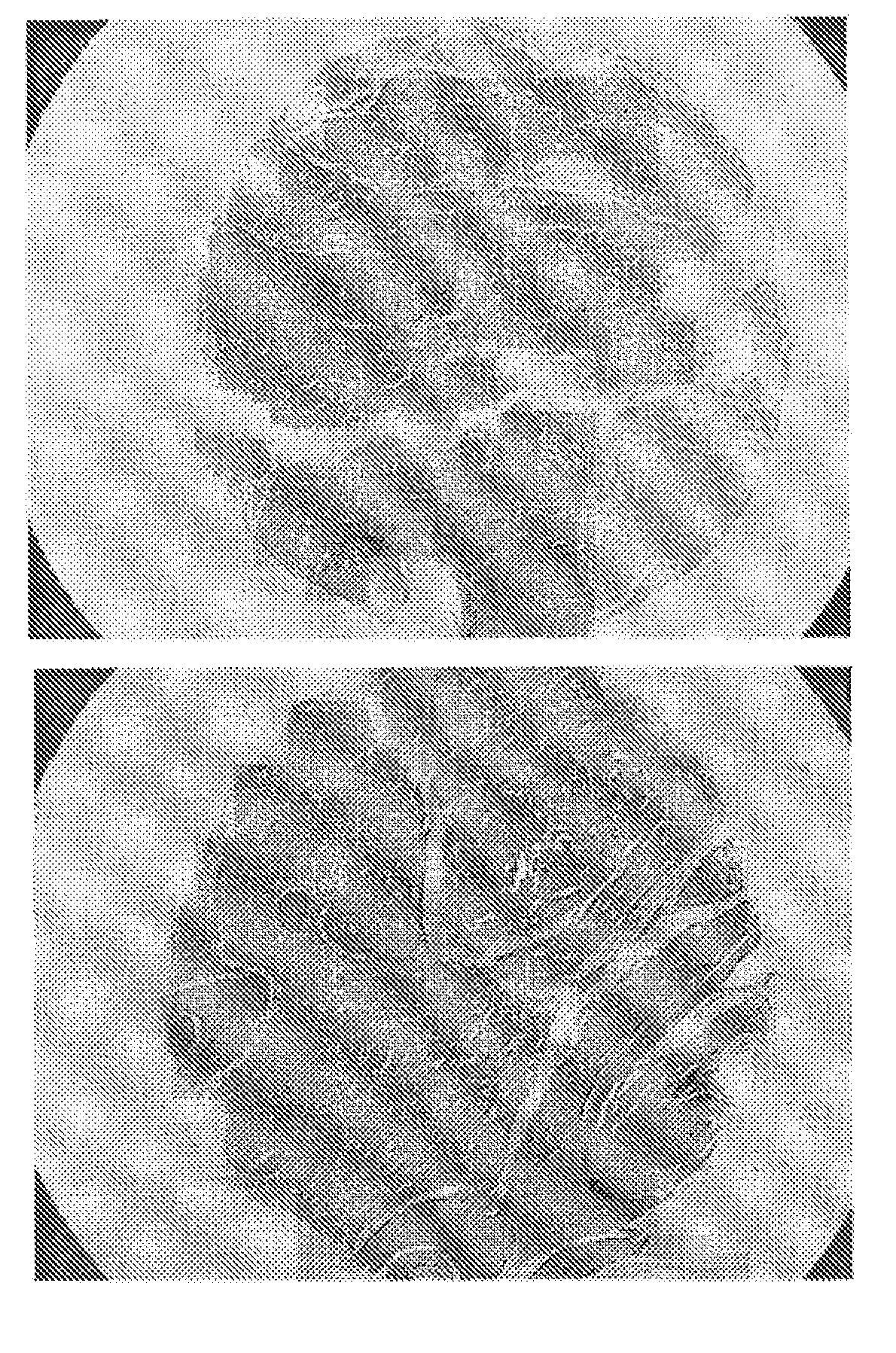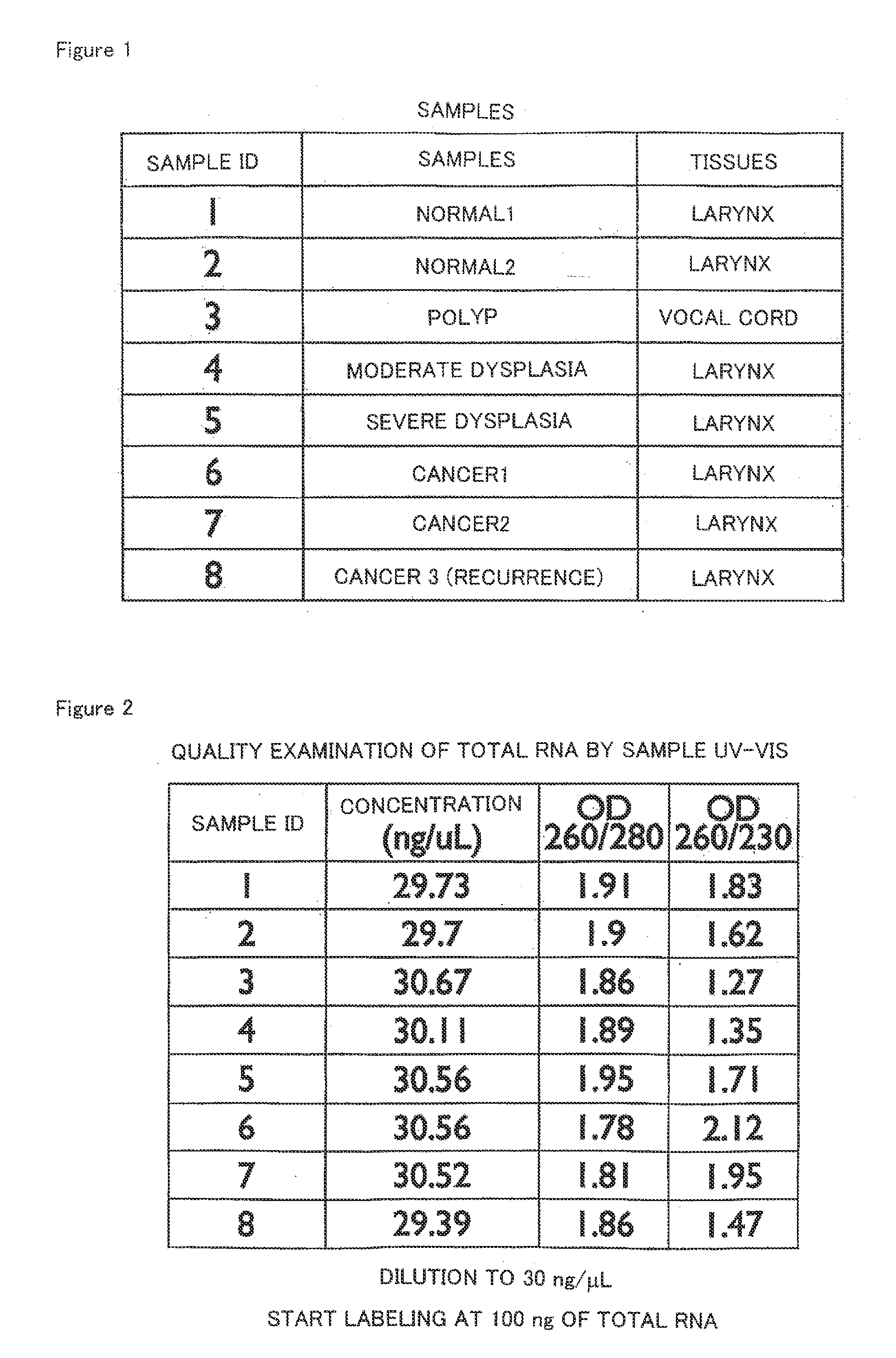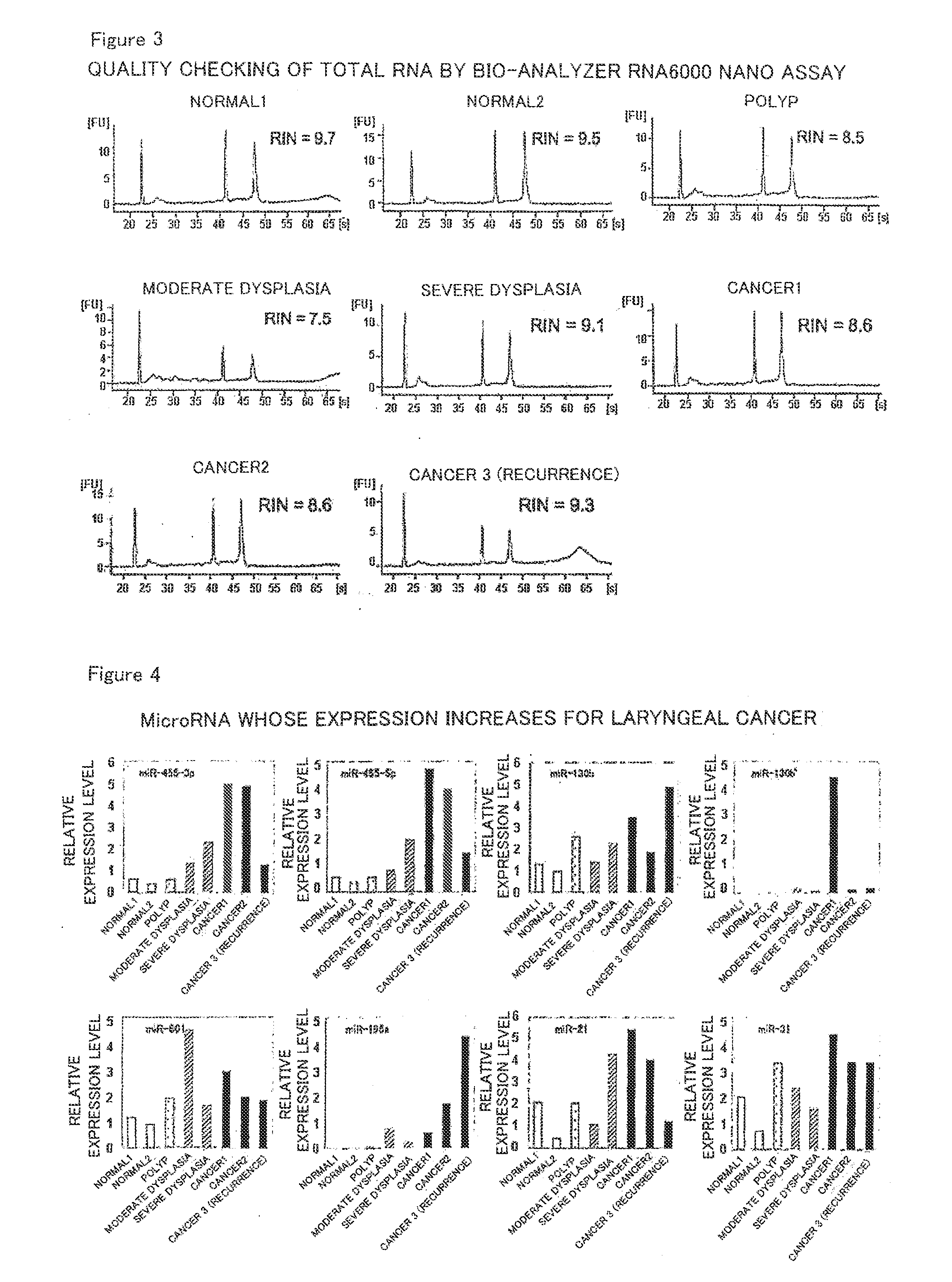Diagnosis/Treatment Option for Head-and-Neck Tumor Using Micro-RNA as Biomarker
a head and neck tumor and expression profile technology, applied in the field of head and neck tumor expression profiles, can solve the problems of difficult to distinguish tumor from benign disease, difficult to determine the progression and invasion degree of the tumor, and not enabling the prediction of the prognosis, etc., to achieve rapid and accurate determination of the presence, and efficient screening
- Summary
- Abstract
- Description
- Claims
- Application Information
AI Technical Summary
Benefits of technology
Problems solved by technology
Method used
Image
Examples
example 1
Collection of Sample Tissue—1
[0085]Under the approval of the ethics committees of Keio University School of Medicine and Sano Kosei General Hospital, patients visiting the otorhinolaryngology clinic of Keio University Hospital or Sano Kosei General Hospital were selected and used as persons to be asked for sample donation. Then, after obtaining informed consent from the persons, 8 sample tissues (“SAMPLE ID 1 to 8” in FIG. 1) were collected from 6 of the persons. In this respect, the sample ID 1 and 6 were those from the same patient, and the sample ID 2 and 7 were also those from the same patient. The tissue types of these 8 sample tissues (the article “TISSUES” in FIG. 1) consisted of two types: larynx and vocal cord; the tissue conditions (the article “SAMPLES” in FIG. 1) consisted of conditions: normal, polyp, moderate dysplasia, severe dysplasia and cancer conditions; and the types of the cancers consisted of two types: incipient cancer (incipient) for cancers 1 to 2 and recurr...
example 2
Extraction of RNA from Sample Tissue and Qualitative Evaluation Thereof—1
[0087]RNA was extracted from each tissue frozen in Example 1 in order to use in a microarray to be described later. Specifically, total RNA comprising microRNAs was extracted from each of the above tissues using mirVanamiRNA Isolation Kit (from Applied Biosystems) according to the appended protocol.
[0088]Then, the extracted RNA was subjected to qualitative evaluation in order to make sure that sufficient accuracy would be obtained in the microarray to be described later. Specifically, the resultant RNA was adjusted to a concentration of about 30 ng / μL using distilled water, and OD260 / 280 (the numerical value obtained by dividing the measured value of OD260 by the measured value of OD280) and the like were measured using a spectrophotometer for calculation. The results are shown in FIG. 2. As shown in FIG. 2, each OD260 / 280 fell in the range of about 1.7 to 2.0, indicating that each RNA was little contaminated w...
example 3
Expression Analysis of microRNAs in Each Tissue—1
[0089]Using Agilent Human miRNA V2 (from Agilent Technologies), 723 human microRNAs were subjected to exhaustive analysis. The above-described Agilent Human miRNA V2 microarray comprises DNA sequences complementary to nucleotide sequences represented by SEQ ID NOs:1 to 11 as probes for miR-455-3p, miR-455-5p, miR-130b, miR-130b*, miR-801, miR-196a, miR-21, miR-31, miR-133b, miR-145 and miR-375, respectively. The method for analysis was according to the method described in Agilent Technologies' miRNA Microarray Protocol Version 1.5. Specifically, the analysis was performed by the following method. The amount of a reagent is described as an amount for one sample.
[0090]First, the total RNA obtained in Example 2 was diluted to about 25 ng / μL with DNase / RNase-free water, and the RNA concentration of the diluted solution was measured. Then, 0.7 μL of 10×CIP Buffer (from GE Healthcare) was mixed with 0.7 μL of 16 U / μL CIP (from GE Healthcare...
PUM
 Login to View More
Login to View More Abstract
Description
Claims
Application Information
 Login to View More
Login to View More - R&D
- Intellectual Property
- Life Sciences
- Materials
- Tech Scout
- Unparalleled Data Quality
- Higher Quality Content
- 60% Fewer Hallucinations
Browse by: Latest US Patents, China's latest patents, Technical Efficacy Thesaurus, Application Domain, Technology Topic, Popular Technical Reports.
© 2025 PatSnap. All rights reserved.Legal|Privacy policy|Modern Slavery Act Transparency Statement|Sitemap|About US| Contact US: help@patsnap.com



